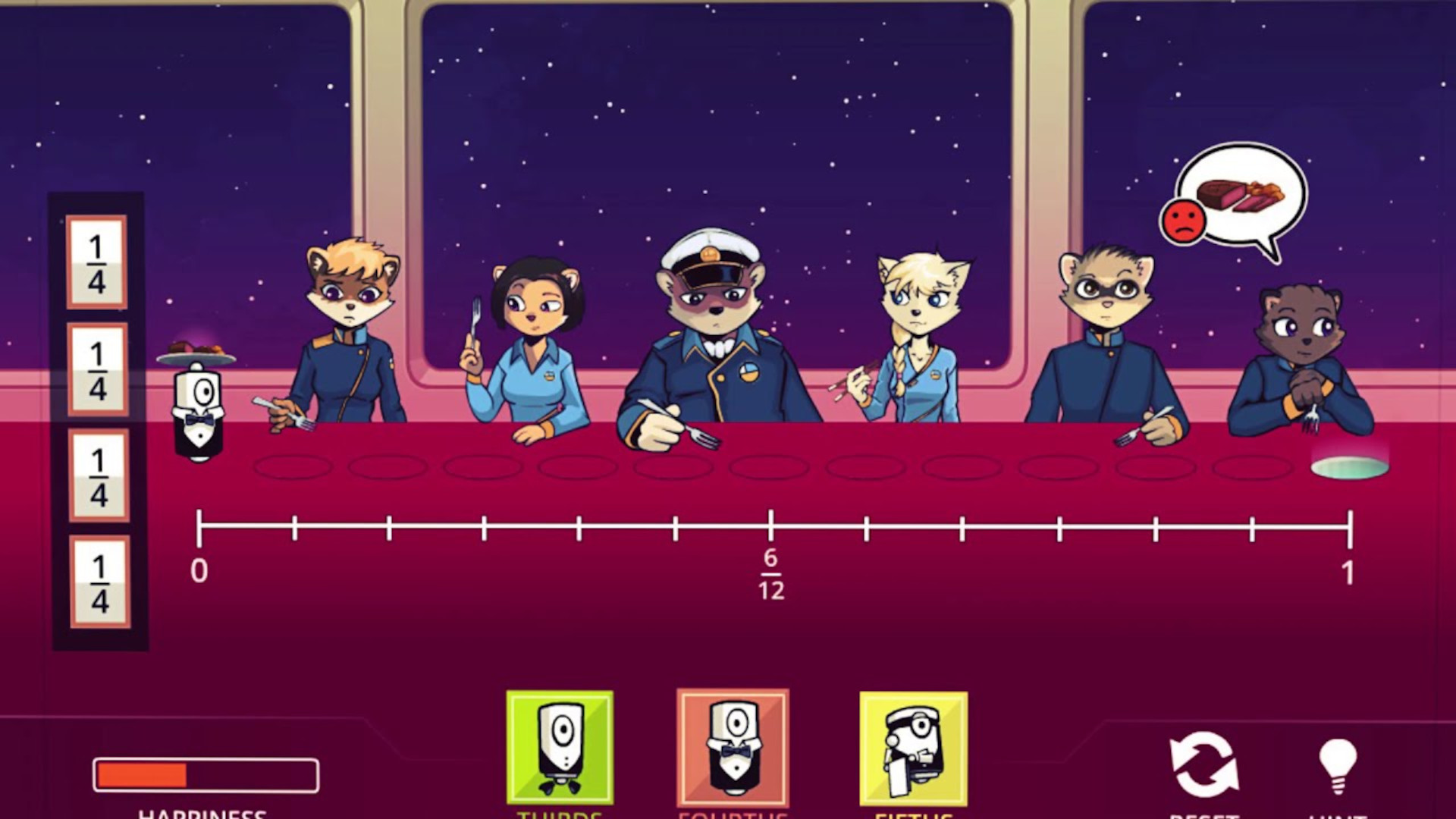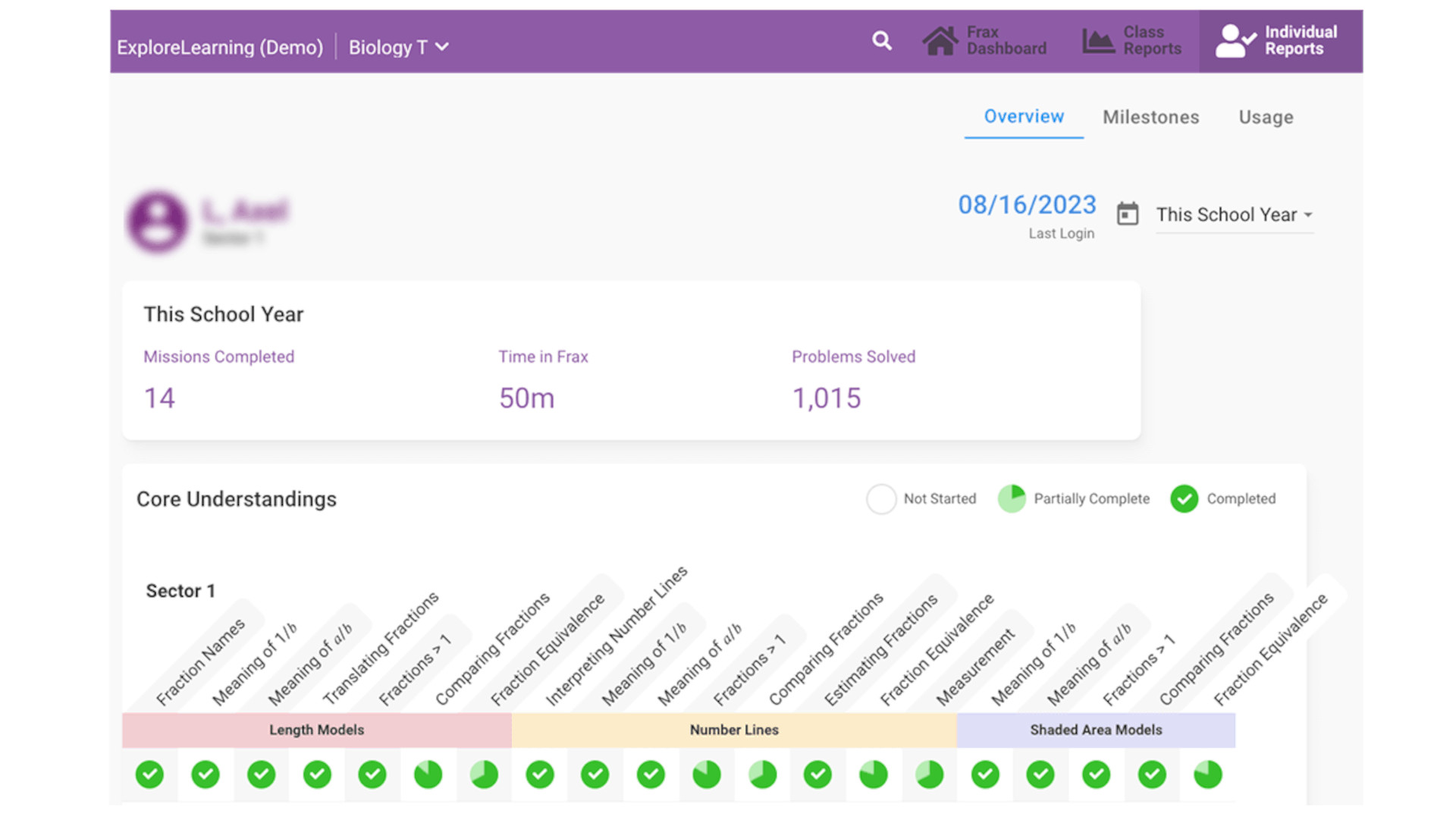Frax: How to Use It to Teach Fractions
Frax teaches fractions with fun, for genuinely impressive student results.

Frax is a web-based tool for teaching students fractions, which uses games to make it fun and engaging.
According to its makers, ExploreLearning, fraction knowledge in grade five can predict student success in algebra and more. Using research-based training, these games help students understand fractions as numbers and better relate to numbers in general.
ESSA Tier 2 research shows using Frax results in a 3x growth for third graders and a 5x improvement for fourth graders. It also supports STEM learning.
This guide aims to lay out all you need to know about Frax and how it can work for your classroom.
What is Frax?
Frax is a digital game-based learning tool that focuses on teaching and mastering fractions. Aimed at third, fourth, and fifth graders specifically, this platform aims to make fraction learning fun and engaging.
Through a series of games, with characters the students come to know, progress can be made through a fictional world in which knowing fractions helps conquer the game's challenges.
The game not only uses missions as a way to break up concepts but also offers tokens as rewards. These can be used to attain items in a store, all of which adds to the immersive nature of this gaming world that keeps students learning.
Tools and ideas to transform education. Sign up below.

How does Frax work?
Frax can be accessed right away, with a free 30-day trial. License options are then available, suited to varying levels that will unlock the entire product. Add your class of students and they can begin learning on any web-browser device immediately.
Students have their own accounts so they can progress, leave, and come back to continue from where they paused. The levels of the game vary with challenges facing our space-travelling characters, each requiring some sort of fraction arithmetic.
For example, a ravine could be created by a robot that our hero needs to cross and so it gets broken into five blocks that students need to drag and drop to get the right number -- five fifths -- into the spaces so the character can progress.
So a basic understanding of fractions is required but it is also very self-explanatory, which should mean all students are able to progress using this tool with minimal teacher support required.

What are the best Frax features?
Frax is fun. It's got space cats as the main characters, sees flying robots and quirky aliens make appearances, and lets the kids become the heroes. That helps to make it easy for students to keep coming back, continue learning, and to make progress toward mastery with minimal effort.
The fact that the game scaffolds fraction concepts and the math fits the storyline, all leaves it feeling seamless. This continues beyond the game as teachers can track student progress from a dashboard, ideal for guiding them to help students progress.
Tasks get progressively harder to help students grow, and at the end of each mission there is a short assessment with questions. This allows students to cement the learning but also for teachers to see how they're taking in what they're learning.
Usefully, teachers can move students ahead if needed. Although with a very compelling storyline, most will likely want to play through anyway.

How much does Frax cost?
Frax offers a free trial and is then charged for at various price points to suit needs.
The free trial lasts for 30 days and can be used by teachers, schools, or districts.
The pricing is then bespoke with rates varying to suit the levels of teacher, school, or district plans.
Frax best tips and tricks
Work in groups
Place students in ability groups so you can more easily assess and give guidance on a group-by-group basis.
Ask questions
Have students ask one another the questions at the end of sections so they can explore their mechanics more deeply together.
Teach in character
Use the game characters as you teach fractions in class, helping students touch what they know as you push to the new.
Luke Edwards is a freelance writer and editor with more than two decades of experience covering tech, science, and health. He writes for many publications covering health tech, software and apps, digital teaching tools, VPNs, TV, audio, smart home, antivirus, broadband, smartphones, cars and much more.

